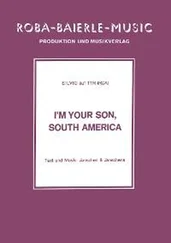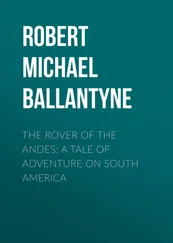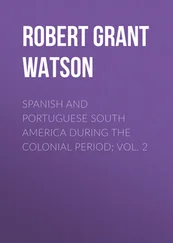James Bryce Bryce - South America Observations and Impressions
Здесь есть возможность читать онлайн «James Bryce Bryce - South America Observations and Impressions» — ознакомительный отрывок электронной книги совершенно бесплатно, а после прочтения отрывка купить полную версию. В некоторых случаях можно слушать аудио, скачать через торрент в формате fb2 и присутствует краткое содержание. Жанр: foreign_antique, foreign_prose, на английском языке. Описание произведения, (предисловие) а так же отзывы посетителей доступны на портале библиотеки ЛибКат.
- Название:South America Observations and Impressions
- Автор:
- Жанр:
- Год:неизвестен
- ISBN:нет данных
- Рейтинг книги:3 / 5. Голосов: 1
-
Избранное:Добавить в избранное
- Отзывы:
-
Ваша оценка:
- 60
- 1
- 2
- 3
- 4
- 5
South America Observations and Impressions: краткое содержание, описание и аннотация
Предлагаем к чтению аннотацию, описание, краткое содержание или предисловие (зависит от того, что написал сам автор книги «South America Observations and Impressions»). Если вы не нашли необходимую информацию о книге — напишите в комментариях, мы постараемся отыскать её.
South America Observations and Impressions — читать онлайн ознакомительный отрывок
Ниже представлен текст книги, разбитый по страницам. Система сохранения места последней прочитанной страницы, позволяет с удобством читать онлайн бесплатно книгу «South America Observations and Impressions», без необходимости каждый раз заново искать на чём Вы остановились. Поставьте закладку, и сможете в любой момент перейти на страницу, на которой закончили чтение.
Интервал:
Закладка:
Of the Canal itself a few words must now be said, just enough to convey some preliminary general notion of it to those who two years hence, when the time for its formal opening arrives, will be deluged with details.
It will be fifty miles in length, from deep water to deep water, though only forty from tide-end to tide-end. The minimum bottom width will be three hundred feet, the minimum depth forty-one feet, the breadth and depth being, however, for the larger part of its length, greater than these figures. Its highest point above sea-level will be eighty-five feet at the surface of the water and forty feet at the bottom, the depth at this point being forty-five feet; i. e. it will be cut down through the dividing ridge of the Continent to a point forty feet above the two oceans.
The simplest way to realize its character is to consider it as consisting of four sections which I will call ( a ) the Atlantic Level, ( b ) the Lake, ( c ) the Cutting, and ( d ) the Pacific section (in two levels separated by a lock). The Atlantic Level is a straight channel, unbroken by locks, of eight miles, from deep water at the mouth of the shallow Bay of Limon, a little west of Colon, to Gatun, where it reaches the valley of the Chagres River. Now the Chagres River had always been reckoned as one of the chief difficulties in the way of making a canal. It occupied the bottom of that natural depression along which all surveyors had long ago perceived that any canal must run. But the difficulty of widening and deepening the river channel till it should become a useable canal, was a formidable one, because in the wet season the river swells to an unmanageable size under the tropical rains, sometimes rising over forty feet in twenty-four hours. This difficulty was at last met and the stream ingeniously utilized by erecting right across the course of the Chagres a stupendous dam at Gatun, which by impounding the water of the river turns its valley into a lake. This lake will have along the central channel a depth of from eighty-five to forty-five feet of water, sufficient for the largest ship. At the Gatun dam there are three locks, built of concrete, with a total rise of eighty-five feet, by which vessels will be lifted up into the lake. The lake will fill not only the valley of the Chagres itself, but the bottom of its tributary valleys to the east and west, so that it will cover 164 square miles in all, and will be dotted by many islands. The central and deepest line of this artificial piece of water, nearly twenty-four miles long, is the second of our four canal sections, and will be the prettiest, for the banks are richly wooded. At the point called Bas Obispo, where the Chagres valley, which has been running south-southeast towards the Pacific turns away to the northeast among the hills, the line of the canal leaves the Gatun river-lake, and we enter the third section, which I have called the Cutting. Here hills are encountered, so it became necessary, in order to avoid the making of more locks, to cut deep into the central line of the continent, with its ridge of rock which connects the Cordilleras of the southern continent with the Sierras of the northern. After five miles of comparatively shallow cutting southward from the Lake, a tall and steep eminence, Gold Hill, the continental watershed, its top 665 feet high, bars the way. Through it there has been carved out a mighty gash, the "Culebra Cut," of which more anon. A little further south, eight miles from the Lake, the ground begins to fall rapidly towards the other sea, and we reach the fourth or Pacific section at a point called Pedro Miguel. Here is a lock by which the Canal is lowered thirty feet to another but much smaller artificial lake, formed by a long dam built across the valley at a spot called Miraflores, where we find two more locks, by which vessels will be lowered fifty-five feet to the level of the Pacific. Thence the Canal runs straight out into the ocean, here so shallow that a deep-water channel has been dredged out for some miles, and a great dyke or mole erected along its eastern side to keep the southerly current from silting up the harbour. From Pedro Miguel to Miraflores it is nearly two miles, and from the locks at the latter to the Pacific eight miles, so the length of this fourth Pacific section, which, unlike the Atlantic section, is on two different levels divided by the Miraflores dam and locks, is ten miles. In it there has been comparatively little land excavation, because the ground is flat, though a great deal of dredging, both to carry a sea channel out through the shallow bay into the open Pacific, and also to provide space for vessels to lie and load or discharge without blocking the traffic.
Thus the voyager of the future, in the ten or twelve hours of his passage from ocean to ocean, will have much variety. The level light of the fiery tropic dawn will fall on the houses of Colon as he approaches it in the morning, when vessels usually arrive. When his ship has mounted the majestic staircase of the three Gatun locks from the Atlantic level, he will glide slowly and softly along the waters of a broad lake which gradually narrows toward its head, a lake enclosed by rich forests of that velvety softness one sees in the tropics, with vistas of forest-girt islets stretching far off to right and left among the hills, a welcome change from the restless Caribbean Sea which he has left. Then the mountains will close in upon him, steep slopes of grass or brushwood rising two hundred feet above him as he passes through the great Cut. From the level of the Miguel lock he will look southward down the broad vale that opens on the ocean flooded with the light of the declining sun, and see the rocky islets rising, between which in the twilight his course will lie out into the vast Pacific. At Suez the passage from sea to sea is through a dreary and monotonous waste of shifting sand and barren clay. Here one is for a few hours in the centre of a verdant continent, floating on smooth waters, shut off from sight of the ocean behind and the ocean before, a short sweet present of tranquillity between a stormy past and a stormy future.
In these forty miles of canal (or fifty if we reckon from deep water to deep water) the two most remarkable pieces of engineering work are the gigantic dam (with its locks) at Gatun and the gigantic cutting at Culebra, each the hugest of its kind that the world has to shew. The dam is nearly a mile and a half long; its base nearly half a mile thick, and it is 400 feet wide at the water line of the lake which it will support. Each of the three locks is double, so that one of the pair can be used by vessels passing from north to south, the other by those passing from south to north. Each has a useable length of 1000 feet, a useable width of 110 feet. They are big enough in length, width, and depth for the largest vessels that were afloat in 1911. He who stands inside one of them seems, when he looks up, to be at the bottom of a rocky glen, "a canyon of cement." Nothing less than an earthquake will affect them, and though earthquakes have been destructive in Costa Rica, two hundred miles away, there is no record of any serious one here. The locks will be worked, and vessels will be towed through them, by electric power, which is to be generated by the fall of the Chagres River over the spillway which carries its water from the lake to the Atlantic.
The great Culebra Cut is interesting not only to the engineer, but also to the geologist, as being what he calls a Section. It is the deepest open cutting anywhere in the world, and shows curious phenomena in the injection of igneous rocks, apparently very recent, among the loose sedimentary beds, chiefly clays and soft sandstones of the latest tertiary epoch. A troublesome result, partly of this intermixture, and partly of the friability and instability not only of the sedimentary strata but also of some of the volcanic rocks, has been noted in the constant slips and slides of rock and earth down the sides of the cutting into the bed of the canal that is to be. This source of expense and delay was always foreseen by those who knew the character of the soil and the power of torrential tropical rains, and was long dwelt upon as a fatal objection to a sea-level canal. It has caused even more delay and more expenditure than was expected. But it has now been overcome, though to avert the risk of future damage to the work when completed the engineers have been obliged to give a much lower slope to the sides of the cutting than was originally contemplated, so that the width of the cutting at the top is also greater than had been planned, and the quantity of material excavated has been correspondingly larger. 5In order to lessen further washing down, the slopes will be sown with creeping grasses and other plants calculated to hold the surface soil.
Читать дальшеИнтервал:
Закладка:
Похожие книги на «South America Observations and Impressions»
Представляем Вашему вниманию похожие книги на «South America Observations and Impressions» списком для выбора. Мы отобрали схожую по названию и смыслу литературу в надежде предоставить читателям больше вариантов отыскать новые, интересные, ещё непрочитанные произведения.
Обсуждение, отзывы о книге «South America Observations and Impressions» и просто собственные мнения читателей. Оставьте ваши комментарии, напишите, что Вы думаете о произведении, его смысле или главных героях. Укажите что конкретно понравилось, а что нет, и почему Вы так считаете.












